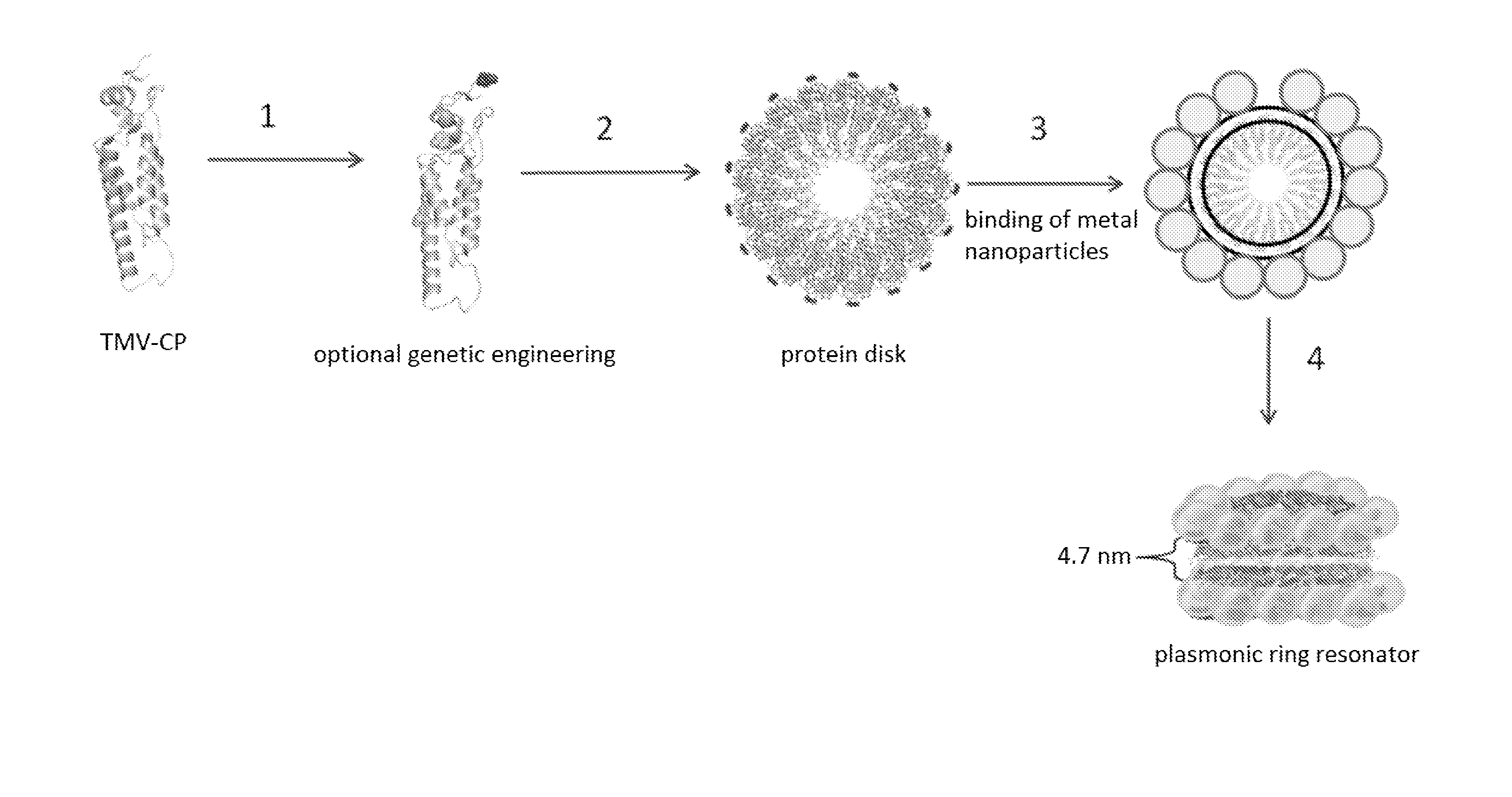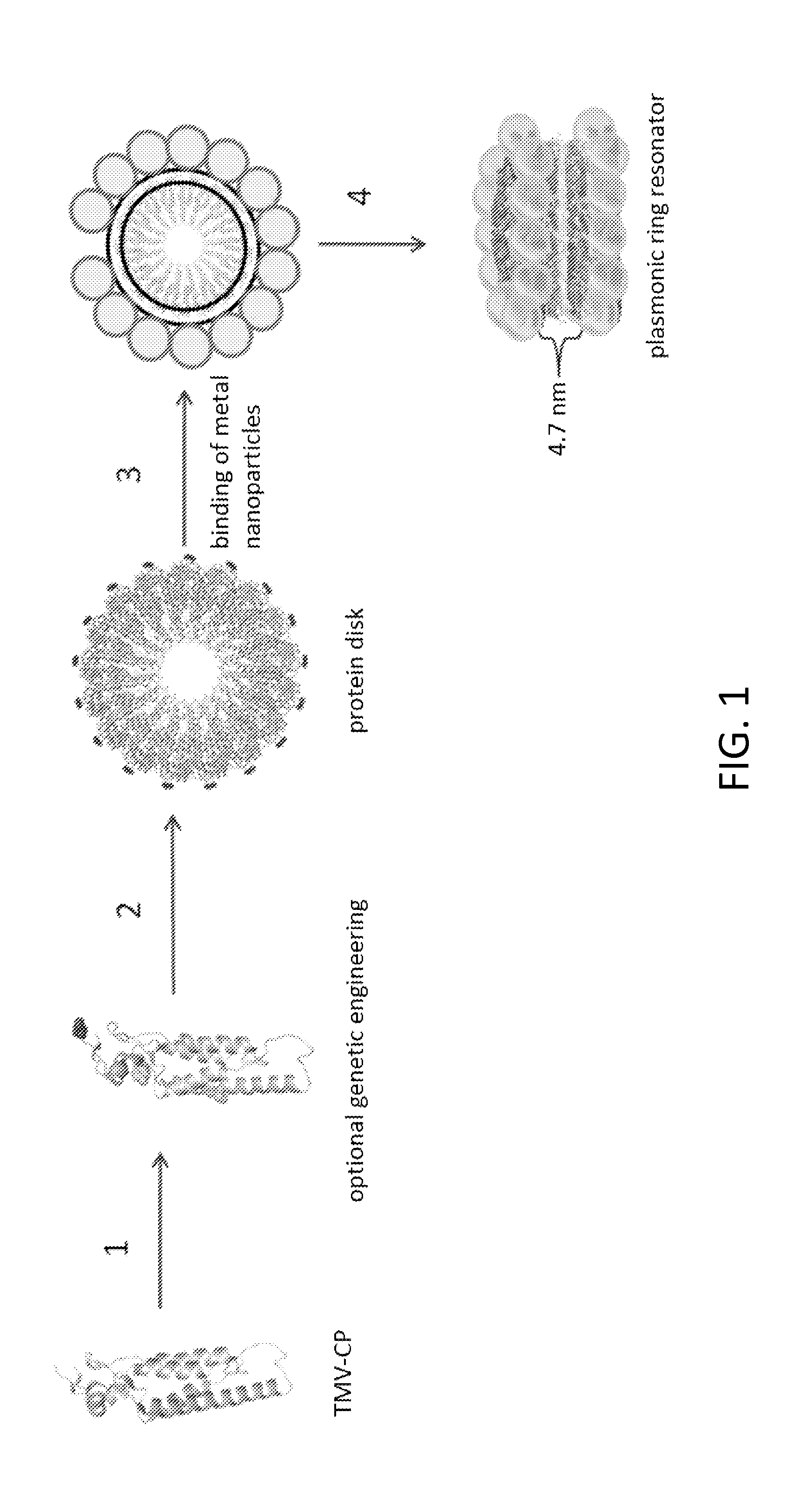Metamaterial Optical Elements Self-Assembled on Protein Scaffolds
a technology of protein scaffolds and optical elements, which is applied in the direction of optical radiation measurement, polarising elements, natural mineral layered products, etc., can solve the problems of lack of registration, time-consuming and expensive nano-lithographic techniques to create such structures with features in the range of 10 or 10 nanometers, and remain a challenge to produce nims that opera
- Summary
- Abstract
- Description
- Claims
- Application Information
AI Technical Summary
Benefits of technology
Problems solved by technology
Method used
Image
Examples
Embodiment Construction
Definitions
[0018]Before describing the present invention in detail, it is to be understood that the terminology used in the specification is for the purpose of describing particular embodiments, and is not necessarily intended to be limiting. Although many methods, structures and materials that are similar, modified, or equivalent to those described herein can be used in the practice of the present invention without undue experimentation, the preferred methods, structures and materials are described herein. In describing and claiming the present invention, the following terminology will be used in accordance with the definitions set out below.
[0019]As used herein, the term “plasmonic ring resonator” refers to a plasmonic waveguide in the shape of a ring and comprising closely spaced metallic material (for example, gold or silver). Although the metallic material is closely spaced along the ring, one or more small gaps may exist (i.e., the ring may be optionally be split and / or disord...
PUM
| Property | Measurement | Unit |
|---|---|---|
| diameter | aaaaa | aaaaa |
| diameter | aaaaa | aaaaa |
| length | aaaaa | aaaaa |
Abstract
Description
Claims
Application Information
 Login to View More
Login to View More - R&D
- Intellectual Property
- Life Sciences
- Materials
- Tech Scout
- Unparalleled Data Quality
- Higher Quality Content
- 60% Fewer Hallucinations
Browse by: Latest US Patents, China's latest patents, Technical Efficacy Thesaurus, Application Domain, Technology Topic, Popular Technical Reports.
© 2025 PatSnap. All rights reserved.Legal|Privacy policy|Modern Slavery Act Transparency Statement|Sitemap|About US| Contact US: help@patsnap.com



